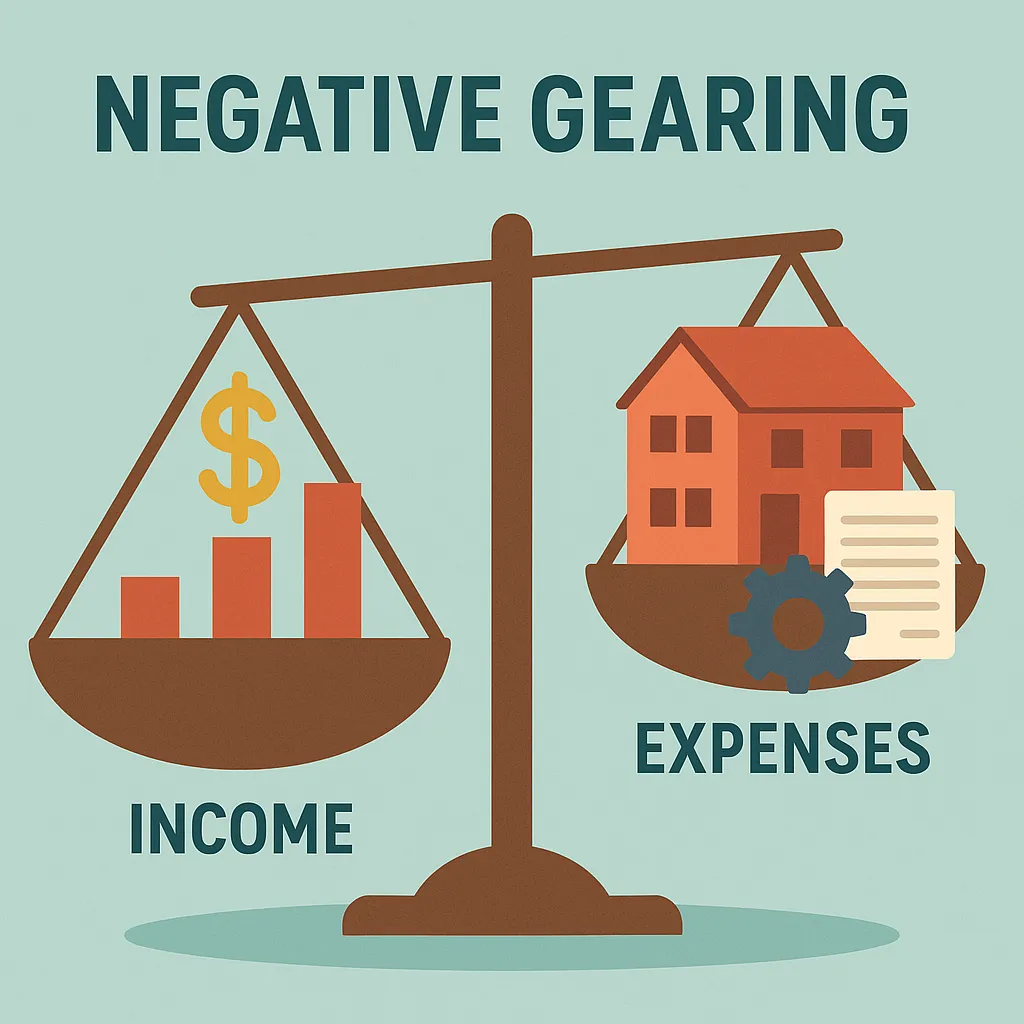read our blog articles

What is Negative Gearing?
Understanding Negative Gearing and Capital Gains Tax in Property Investment
Negative gearing is a common investment strategy in Australia, especially in the property market. It's also a hot topic in the media during election seasons—like now. So, what does it actually mean, and why should property investors care about it and capital gains tax (CGT)?
What is Negative Gearing?
Negative gearing happens when the costs of owning an investment—such as mortgage interest, property management fees, insurance, and maintenance—exceed the income it generates, like rent.
For example, if your rental income is $2,800 a month but your expenses total $3,200, you’re negatively geared. The $400 loss can be claimed as a tax deduction against your other income, like your salary.
In contrast, positive gearing means your rental income exceeds your expenses, and neutral gearing means your income and costs are about equal.
Why Do Investors Use Negative Gearing?
Despite the losses, many investors still see value in negative gearing. Why? Because they expect the property’s value will rise over time. The profit from selling the property later—known as a capital gain—can potentially outweigh the yearly losses.
Also, those losses can reduce your taxable income, which is especially appealing to people in higher tax brackets.
What is Capital Gains Tax (CGT)?
CGT is the tax you pay on the profit when you sell an investment property. While it’s called a separate tax, it’s actually part of your income tax.
If you’ve owned the property for over 12 months, you may be eligible for a 50% CGT discount, which can significantly reduce the tax you owe on the gain.
Why is This in the News Again?
Negative gearing and CGT have long been debated in Australian politics. Critics argue they contribute to housing affordability issues and benefit wealthier investors.
For example, the 2010 Henry Tax Review recommended reducing the CGT discount to 40%, but it was never implemented. More recently, the Australian Council of Social Service (ACOSS) urged the government to halve the CGT discount over five years and limit negative gearing to investment income only—not wages.
What Are the Political Parties Saying?
· The Greens: Pushing for changes to negative gearing if they gain influence after the election.
· Labor: Previously proposed reforms in 2016 and 2018, but not currently pursuing changes.
· The Coalition: Leader Peter Dutton has promised to keep negative gearing and CGT concessions unchanged if elected.
Thinking of Investing in Property?
If you're considering buying an investment property, it’s important to get professional advice. A tax advisor or financial planner can help you navigate the details.
And if you’re ready to take the next step, we’re here to help with your finance options. Contact us to explore the right investment loan for your goals.


